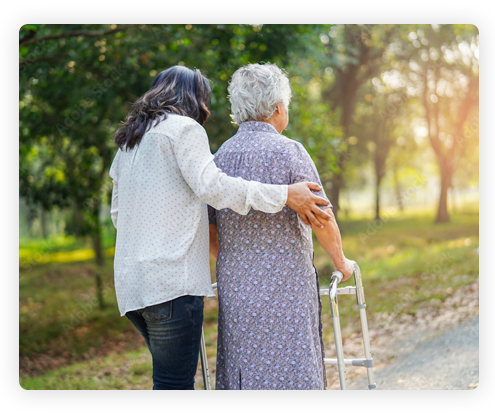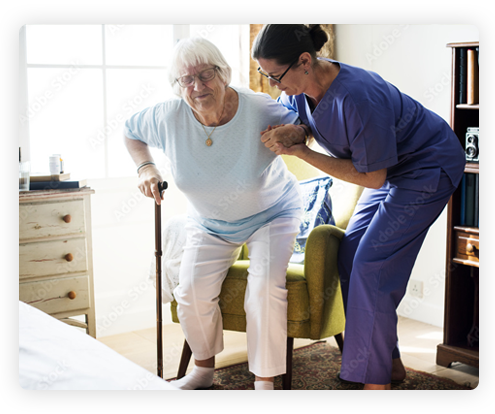LSVT BIG Treatment
LSVT BIG is an intensive, amplitude-focused physical and occupational therapy approach developed and scientifically researched over the past 25 years with funding from the National Institutes of Health.
Research on LSVT BIG has demonstrated the following improved ratings on motor function tests in people with Parkinson’s Disease:
- Faster walking with bigger steps
- Improved balance
- Increased trunk rotation
- Improvements in activities of daily living such as bed mobility
- Improved UPDRS Motor Score
LSVT BIG is a standardized treatment protocol, which is customized to the unique goals of each patient, including gross and fine motor skills.
LSVT BIG can be adapted or progressed in order to meet each patient’s needs across a range of disease severity and presenting impairments.
Utilizing the concept of “THINK BIG”, this treatment improves walking, self-care and other tasks by helping people “recalibrate” how they perceive their movements. This treatment teaches them how and when to apply extra effort to produce bigger motions with more normalized movements.

LSVT BIG Treatment Consists of:
- 16 sessions: 4 consecutive days a week for 4 weeks
- Individual 1 hour sessions
- Daily homework practice
- Daily carryover exercises
It is essential that LSVT BIG treatment is only delivered by physical or occupational therapists who are certified in this method.
Home Care Delivery of LSVT BIG
 Meeting CMS criteria:
Meeting CMS criteria:
- Establish a functional need
- Transition care requires a documented recent decline in function for payment by CMS/coordinated third party payers
- SOC OASIS must establish Reasonable and Necessary requirements based on M1810 – 1860 scores of greater than or equal to 2
- SOC OASIS must establish Reasonable and Necessary requirements based on M1900 A through documentation of Prior Level of Function as “Independent” or “Needed Some Help”Establish a reasonable frequency based on benchmarking and staffing roles:Consider a PT/OT “split” of 2×4 each
- Comprehensive home care approach for ambulation, transfers, bathing, dressing deficit treatmentapproaches, based on deficits identified at SOC
- Built-in opportunities for coordination of care
- Reduced staffing burdens for valuable field staff
- Added value in quality approach for team training and the patient is in a win-win situation forrecalibration in functional carryover tasksScreen all patients for LSVT BIG stimulability and participation (Parkinson’s, CVS, MS, Dementia):
- If the deficits are documented, you have established Reasonable and Necessary for your skilled services using this evidence-based treatment approach
-
- Never provide LSVT BIG to your patients with ALS or MD to avoid acceleration of damage to muscle tissue
- Use task pacing and avoid over-heating with your MS patients
-
- Avoid training in LSVT BIG during an MS exacerbation
- Remember that patients with more advanced Parkinson’s Disease are still candidates for full LSVT BIG protocol
- Remember that competency and safety with functional tasks are more and more important
- Daily exercises and cued BIG functional movement may become your “goal” in people with greaterdisease severity
- Caregiver competency in cueing BIG for bed and ADL mobility safety may be your “goal”
- Reduces caregiver burden, reduces transition to extended care facility
- Activating your “advanced” or “end-stage” patients in-home can be a stepping stone to discharge to outpatient treatment and community re-entry with support!
- Co-morbidities and acute conditions are very real issues in home care
- Remember that these patients are still candidates for full LSVT BIG protocol
- Fall risk, problems in functional transfers and mobility can exacerbate chronic medical conditions
- Their homebound status will prevent them from participating in LSVT BIG in outpatient settings
- Two-week trial is appropriate and evidence based for use of stimulability testing, pilot assessment of patient and caregiver’s “compliance” for an intensive in-home approach

